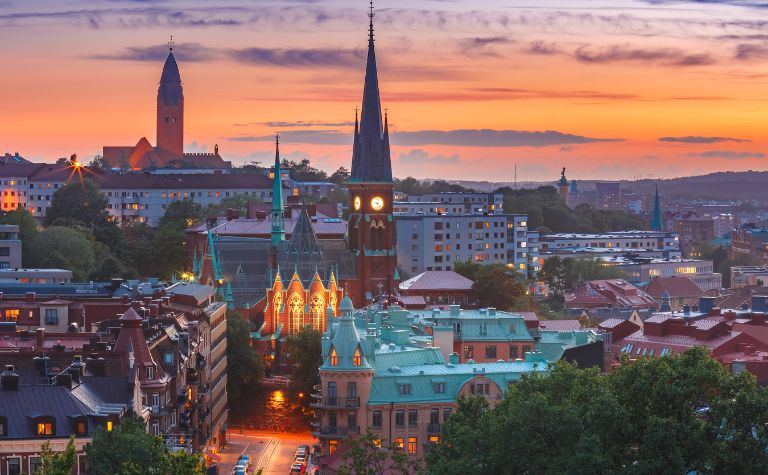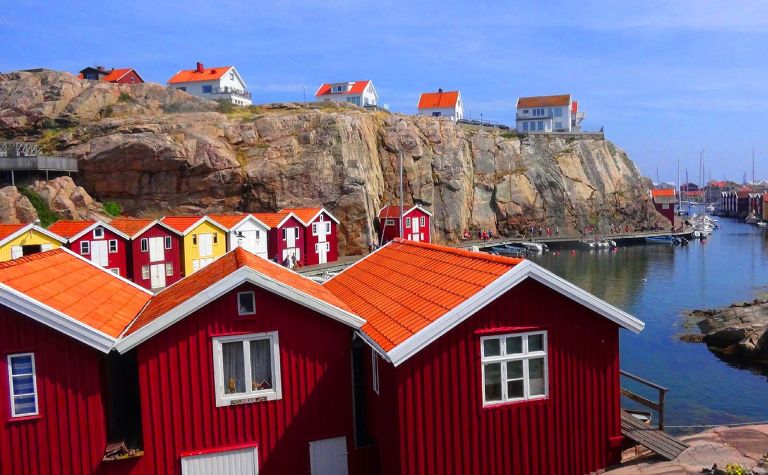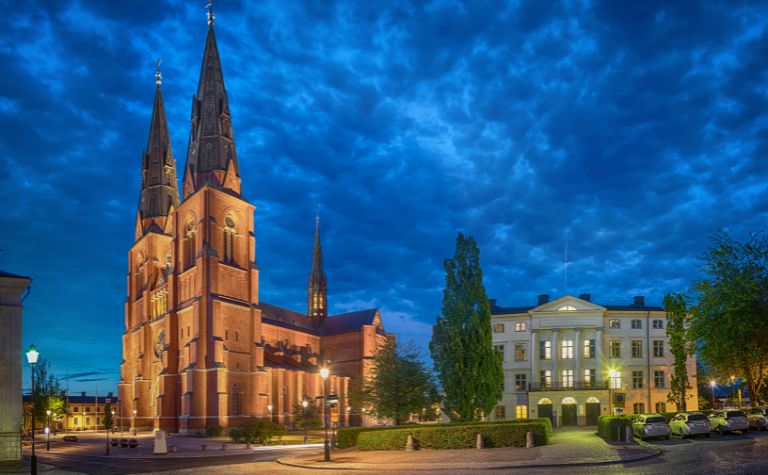Sweden belongs to the geographical region of the Scandinavian Peninsula, located towards the northern reaches of the European continent.
The northern parts of the country are close to the Arctic Circle, which is part of the land known as the “land of the midnight sun.”[1]
It is not always dark in Sweden. Even in the northernmost parts of the country, like Lapland, the country sees about four hours of daylight for most days in the winter.
In summer, the nights are as short as the days in winter, with some parts of the country seeing 24/7 daylight.
This article will get into the timings of day and night across Sweden, address whether Sweden is dark for six months of the year, and explain the “midnight sun” phenomenon.
It will also explain how the Swedes deal with their dark and long winters.
Also, see What Is Sweden Known For? to learn more.

Time and Daylight in Different Parts of Sweden
Swedish winters are famously long, cold, and dark, with darkness falling as early as 2:00 PM.
Nevertheless, the country is rarely completely dark, except in some northern parts where the sun doesn’t rise at all around the winter solstice.[2]
The amount of daylight in Sweden varies across the country and is dependent on the region. On average, the country receives about 9 hours of daylight in July and as little as one hour in December.[3]
The southern parts of Sweden experience longer and warmer days and, subsequently, also experience longer daylight hours.
For instance, in southern cities like Gothenburg and Malmö, daylight begins as early as 4:10 AM in summer and lasts as late as 10:15 PM.
In winter, daylight begins as late as 09:00 AM and ends at 3:30 PM.[4]
Svealand, or central Sweden, includes the capital of Stockholm. This region is characterized by colder and longer winters, which also affects daylight.
If we consider Stockholm in summer, the sun rises as early as 3:30 AM and sets at 10:00 PM, which gives the city about 17 hours of daylight.
In the winter, the sun may only rise at 9:00 AM and set at 3:00 PM, which gives the city only about six hours of daylight all day.[5]
In the northernmost parts of the country known as Norrland lies the famous province of Lapland, which is part of Sweden’s Arctic North.
This region sees great extremes in daylight, experiencing both the midnight sun and the polar night.
In these regions, the sun is up all day for at least a full month in summer, which means the region gets about 24 hours of daylight in one day.
In the winter, the sun stays down around the winter solstice and doesn’t come back up for several weeks.[6]
Also, see What Is There To Do In Sweden? to learn more.

Midnight Sun and Polar Night in Sweden
The terms “midnight sun” and “polar night” refer to natural phenomena that occur in areas near the poles.
As the name suggests, the midnight sun refers to a time when the sun doesn’t set. As noted earlier, northern parts of Sweden experience the midnight sun for at least a month in summer.
During this time, the sun moves through the sky but never fully sets.
During these months, people living in Sweden’s Arctic North must consciously maintain a schedule in order to prevent disorientation caused by the 24/7 daylight.
Polar nights refer to the phenomenon in winter when people do not see any daylight at all for several weeks because the sun doesn’t rise.
In places like Lapland, this can last as long as a month. The weeks of polar nightfall around the winter solstice, which is the longest night of the year.
The dark winters are why people imagine Sweden as “always dark.” However, the truth is that Sweden has extremes in the range of daylight, with daylight ranging from 0-24 hours, depending on the season.
How Many Months Are Dark in Sweden?
Summers in Sweden are bright, with months like June being days of the midnight sun when the sun never sets.
The daylight lasts all the way up to October, when winter starts setting in, and the days get shorter.
One month is completely dark in Sweden’s northern lands, during the polar night when the sun never rises.
Sweden also experiences about four months of winter darkness, where daylight averages to as little as an hour a day across the country.
The winter sets in towards the end of October and lasts till February, give or take a few weeks.
The onset of winter naturally varies across the country, as the regions closer to the poles experience winter earlier and longer than the rest of the country.
Places in the southernmost parts of Sweden don’t experience winter till December, which is when the days start getting shorter.[7]
Naturally, south Sweden experiences a shorter winter of about three months.
Also, see Why Is Sweden So Rich? to learn more.

How Do Swedes Deal With Darkness?
Polar nights and the low daylight hours associated with Sweden’s winters can affect the body.
While people maintain a regular schedule to prevent disorientation, the absence of sunlight leads to increased tiredness and varying degree of Seasonal Affective Disorder.[8]
Swedes deal with darkness by getting up early to catch daylight, maintaining a routine, taking Vitamin D supplements, getting light therapy, and spending time with family indoors.
People try to see sunlight during the hours it is visible and may use bright lights inside to help them stay awake.
Darkness is what encourages bodies to produce melatonin, the “sleep hormone.”
The production of melatonin leads to tiredness and lethargy, and over time people may experience depression as well.
Swedes do their best to be outside when the sun is out, experiencing nature outside and participating in winter sports, in addition to walks and taking their coffees outside.
Taking in the available sunlight, combined with bright white lights, helps people keep their spirits up.
Additionally, people may also sit in “sunrooms” that use lights that are “full spectrum,” similar to grow lights used to grow tropical plants indoors.
These lights and Vitamin D supplements support Swedes in dealing with the winter darkness.
Also, see What Kind of Government Does Sweden Have? to learn more.
References:
[1] Source
[2] Source
[3] Source
[4] Source
[5] Source
[6] Source
[7] Source
[8] Source
